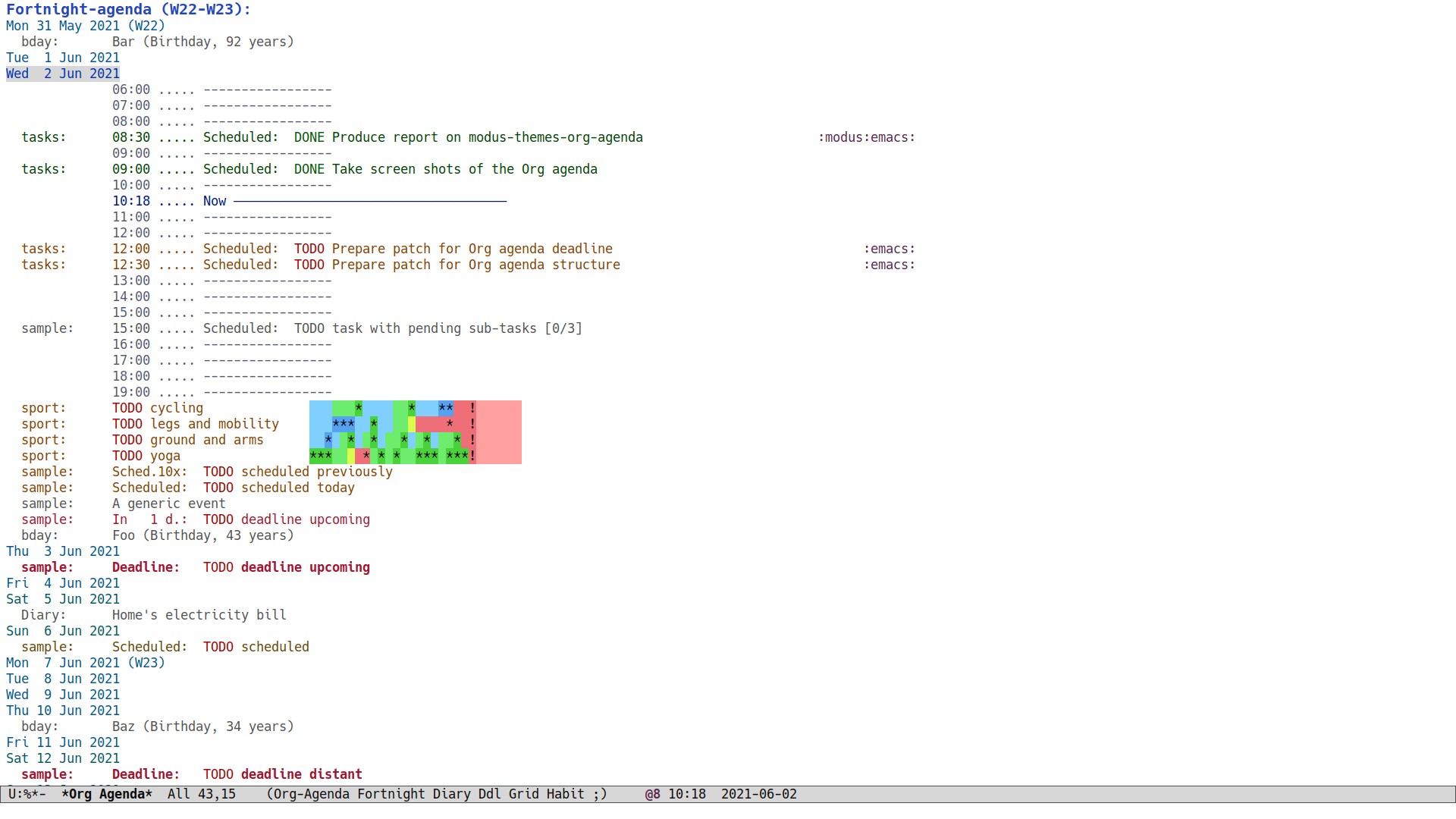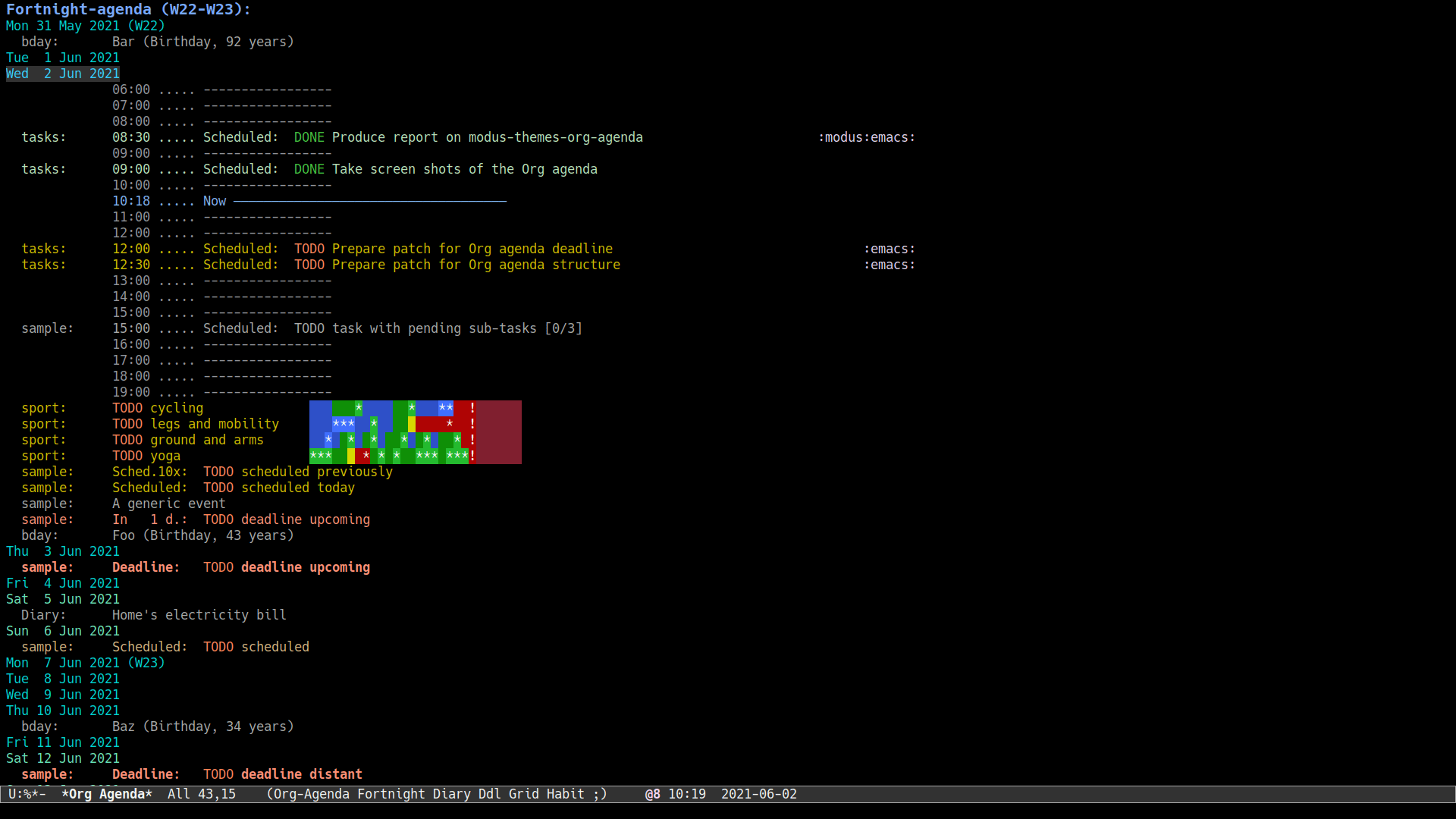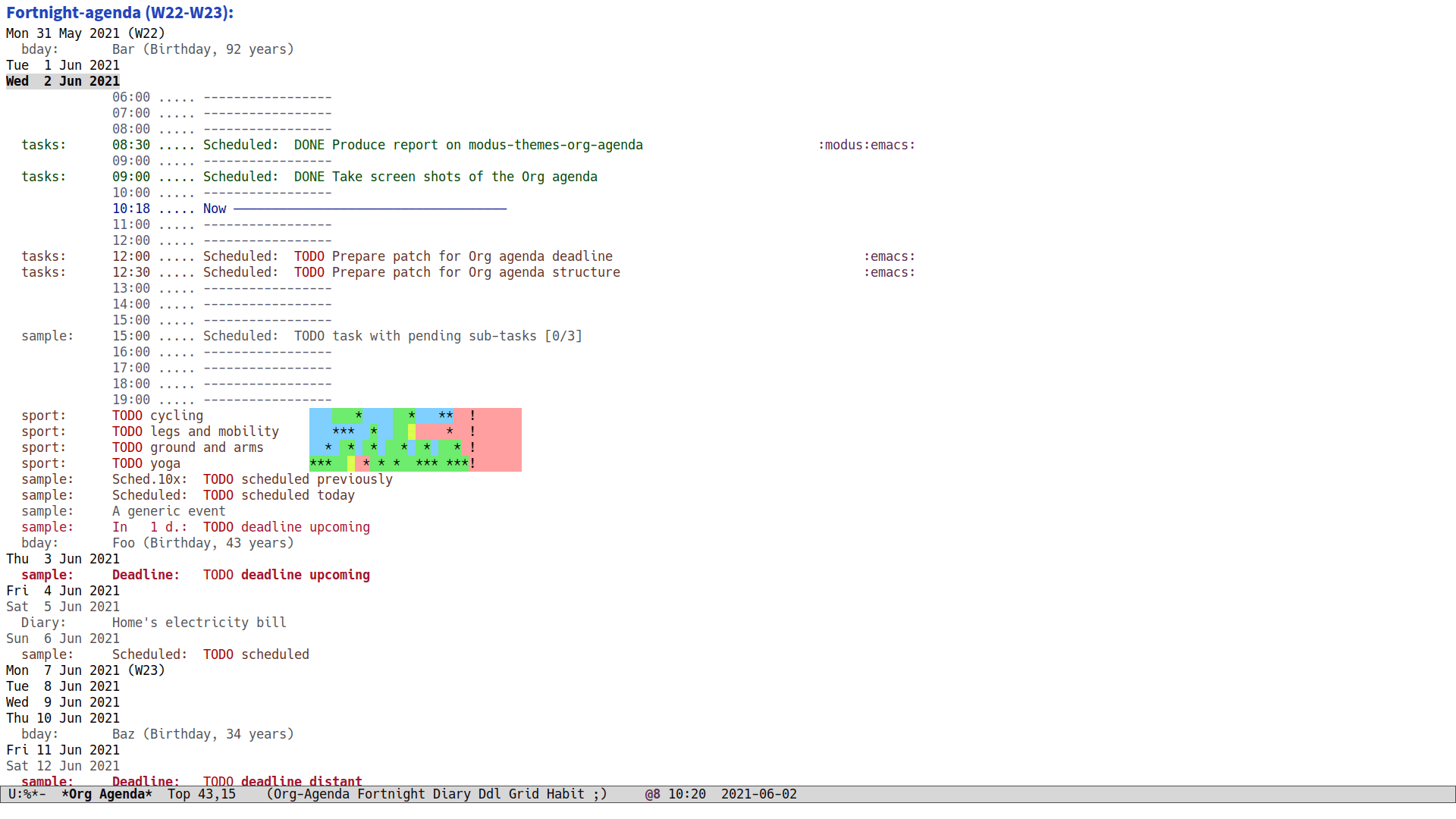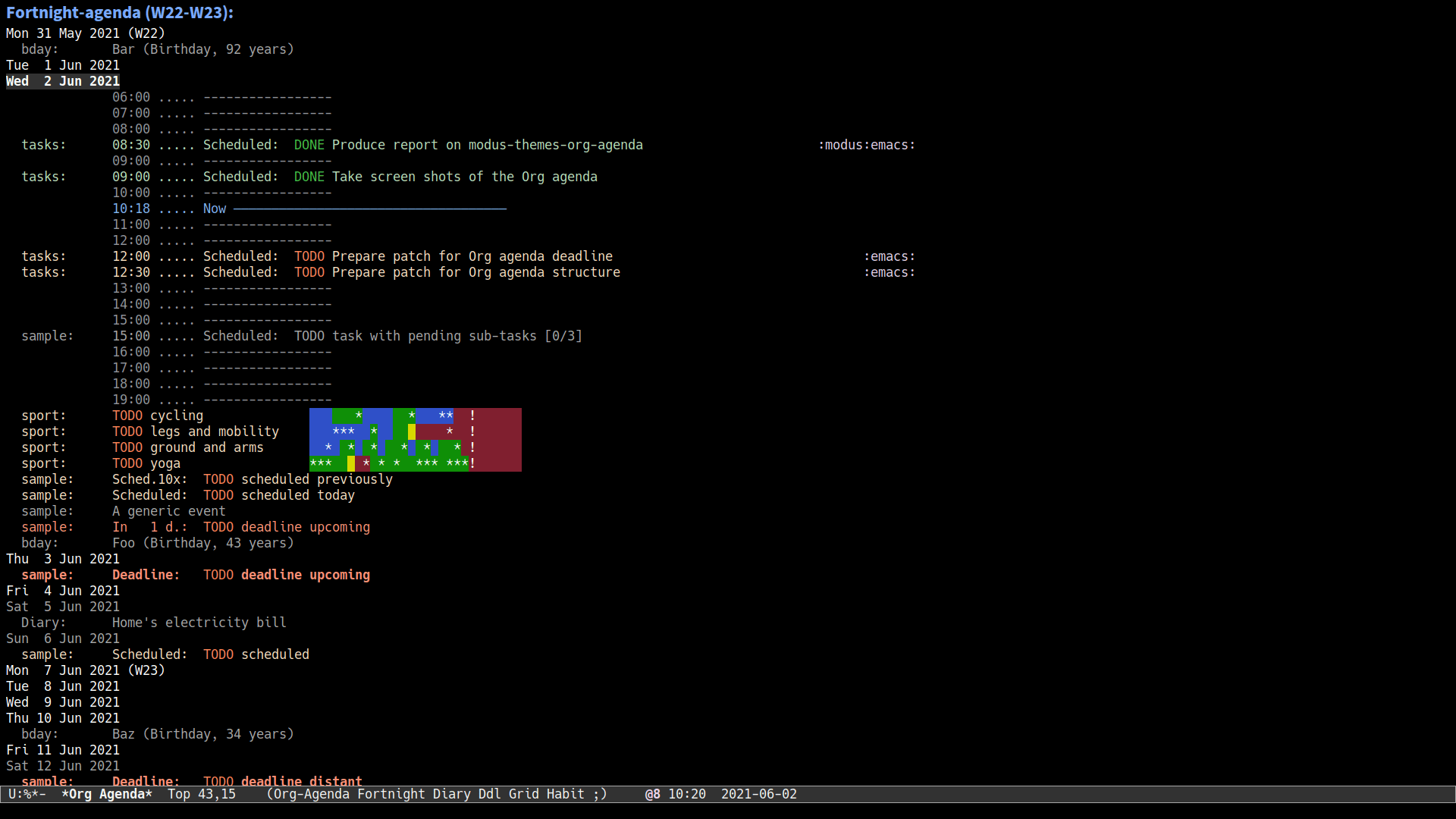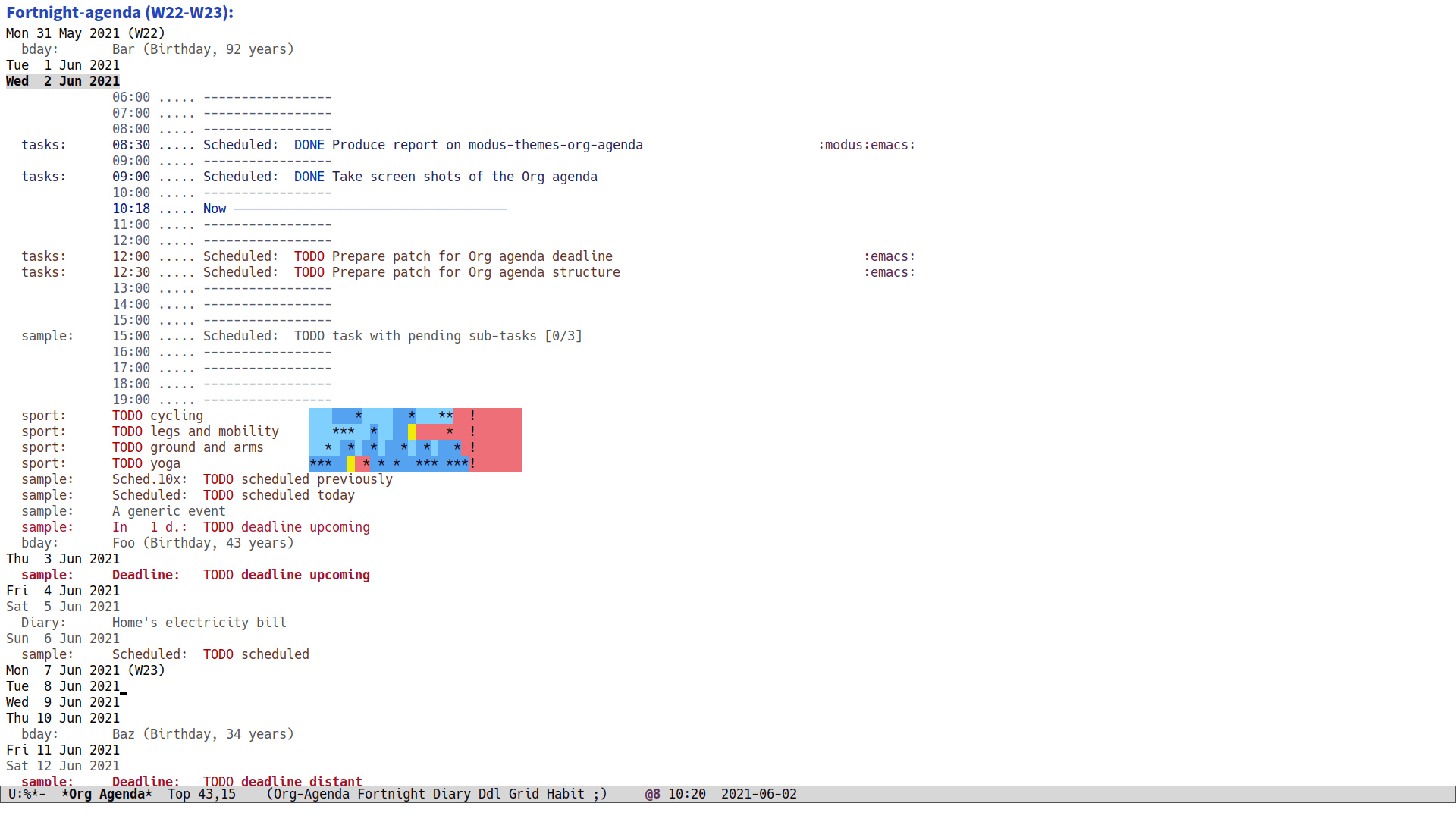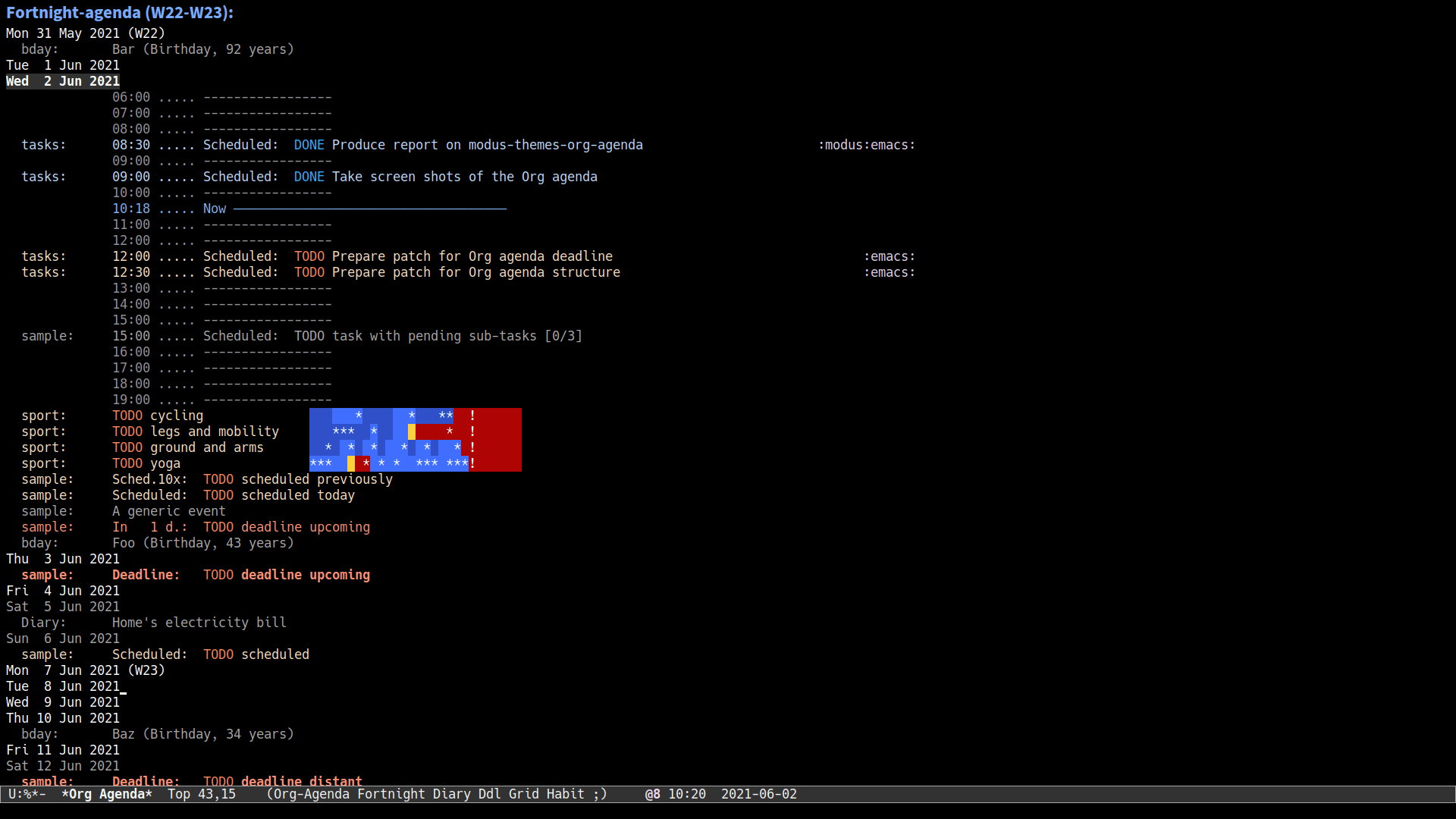Introducing the variable modus-themes-org-agenda
Starting with commit 29b5e57e to the main branch of the Modus
themes, users have the option to
customise the presentation of the Org agenda. This will become widely
available through upstream Emacs and GNU ELPA in version 1.5.0 of the
themes (tentative release frame in early July). The new variable is
modus-themes-org-agenda, which accepts an alist where each combination
corresponds to specific parts of the agenda buffers. Those parts are
parameterised to be styled independent of each other.
First an overview of the user-facing code and then some screen shots:
(setq modus-themes-org-agenda
'((header-block . (variable-pitch scale-title))
(header-date . (grayscale bold-today))
(scheduled . uniform)
(habit . traffic-light-deuteranopia)))
Those associations correspond in the given order to:
-
The block headers that describe each agenda view. For example, when you do
M-x org-agendafollowed bynyou get a header at the top that describes the days’ view and one further below which pertains to all pending tasks. -
The date headers in the day views.
-
Items with a scheduled timestamp assigned to them. Remember that “scheduled” refers to the day/time a task should be started: it is not a deadline (read On using to-do lists efficiently (2021-04-26) by Bastien Guerry, the Org maintainer).
-
The
org-habitgraph for those who use it to track their consistency over recurring tasks (e.g. daily exercise).
The header-block and header-date keys accept lists of values which
combine their effects. For instance, header-date can use a
workaholic value to apply uniform colouration to weekdays and weekends
and combine it with grayscale so that the colours are black/white
instead of the default shades of cyan. Those lists can be one item
long, such as (header-date . (grayscale)). For more items, the order
is not significant, so (header-date . (workaholic grayscale)) and
(header-date . (grayscale workaholic)) yield the same results.
The scheduled and habit keys accept a symbol, as shown in the sample
alist above.
Default looks
This is an agenda buffer without any customisations whatsoever. We use colour to differentiate the various constructs, but try not to overdo it as users’ agendas can be rich with entries and too much colour can be a hindrance to productivity.
Tweaked looks
Here is the same agenda view with the following styles (remember to read either the doc string or the manual’s entry on the matter):
(setq modus-themes-org-agenda
'((header-block . (variable-pitch scale-title))
(header-date . (grayscale bold-today))
(scheduled . uniform)
(habit . simplified)))
Deuteranopia styles
As I have noted before, such as in my latest status
report
on the Modus themes’ progress, we provide the tools to empower users
with red-green colour deficiency (deuteranopia). This practically means
to avoid unconditional colour-coding that relies on a distinction
between red and green, by substituting green with blue. To that end,
the themes provide modus-themes-success-deuteranopia (e.g. for Org
“DONE” tasks or Isearch matches) and modus-themes-diffs which has
relevant styles with a red-blue design.
For modus-themes-org-agenda, the only place where we need to introduce
such an alternative is for the org-habit graph. We do so by tweaking
the traffic-light style/workflow as traffic-light-deuteranopia: it
uses red, yellow, and blue to present its indicators.
With those configurations we get the following samples:
(setq modus-themes-success-deuteranopia t)
(setq modus-themes-org-agenda
'((header-block . (variable-pitch scale-title))
(header-date . (grayscale bold-today))
(scheduled . uniform)
(habit . traffic-light-deuteranopia)))
Attention to detail
To develop this variable, I benefited from the insights, commentary, suggestions, and testing of Gustavo Barros in issue 208 (the discussion has over 200 comments as of this writing). Gustavo put forward the idea of reviewing the old defaults, which eventually led us to the realisation that only a new customisation option would suffice; an option in the form of an alist to offer us maximum flexibility.
Internally, the design of modus-themes-org-agenda draws from the
in-progress patch of Philip Kaludercic on the redesign of compound
values for the numerous customisation options the themes provide,
starting with modus-themes-mode-line (refer to the discussion in
merge request
40).
Through the discussion with Gustavo, we also identified areas where Org itself can be improved. Those will be formalised as patches and sent to the maintainers. Their basic idea is to implement faces that are optimised for their context in the agenda buffers. I shall work on those as soon as I am done with this report and will write about them in those web pages after they are accepted by upstream.
In short, we pay attention to detail and want the best possible result for all users. Thanks again to Gustavo for the fruitful collaboration thus far and thanks in advance to Philip for the forthcoming patches!
NOTE: The modus-themes-org-agenda supersedes the now-deprecated
modus-themes-org-habit. Users of the old variable can get the exact
same styles by controlling the habit key inside of the new alist, with
possible values still being the same as before, plus the
deuteranopia-optimised addition, namely: nil (default), simplified,
traffic-light, traffic-light-deuteranopia.
